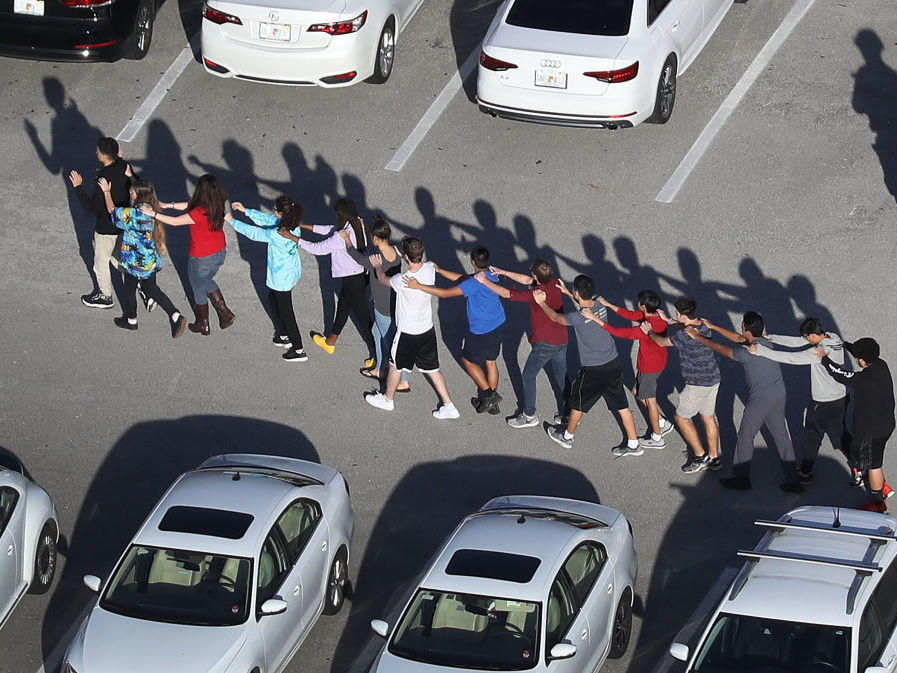
In the wake of the recent attack in Parkland, Florida, the Department of Homeland Security (DHS) is stepping up actions to better protect America’s schools against gun violence, as well as other potential threats. DHS conducts training, exercises, and preparedness activities year-round to increase the security of schools across the country and the communities in which they are located.
“No child should have to worry about their safety when in school,” said DHS Secretary Kirstjen Nielsen. “The Department’s top priority is to keep the American people safe, and we are closely examining ways to better protect our nation’s students and schools from gun violence.”
Nielsen added that “while state and local partners have primary responsibility for the physical security at schools, through trainings, best practices guides, workshops, and tabletop exercises, we hope to improve awareness and foster a culture of preparedness. We are working with partners around the country to harden these vulnerable targets. By ensuring administrators and stakeholders in the K-12 and higher education communities, teachers, parents, law enforcement, and first responders are part of this effort, we can better educate the entire community on threats to school safety.”
“The public is often our greatest partner in identifying suspicious activity, and we are strengthening public awareness campaigns to encourage everyone—students, teachers, and their communities—to report suspicious school-related activity to local law enforcement.”
To help coordinate the Department’s wide range of activities, DHS has established a Department-wide Executive Steering Committee that will drive DHS school security efforts, in support of state and local efforts, and ensure the resources and expertise of the Department are best leveraged to protect the nation’s schools against attack.
More about DHS’ actions on school security.
Education and Community Awareness: DHS is engaging school administrators, teachers, students, parents, and other stakeholders across the K-12 and college university communities, as well as law enforcement and other first responders who serve those communities, to raise awareness, communicate best practices, and promote no cost/low cost security measures.
- Through the Hometown Security Program, the Department works with schools and community leaders to proactively think about security and implement security measures.
- The DHS’ Youth Preparedness Council conducts ongoing disaster preparedness-based engagement with K-12 representatives and campus leaders.
- School Transportation Security Outreach efforts provide guidelines and other materials to school districts and transportation providers on school bus security.
- DHS’ Protective Security Advisors perform security-focused community level outreach at educator’s conferences/school board meetings and, within the scope of existing resources, help schools conduct security vulnerability assessments.
- In partnership with the Department of Education, DHS leads the Homeland Security Academic Advisory Council, and is looking to expand current council membership to include state/local public school administrators, private/parochial school leadership, and associations that represent the K-12 community.
- DHS is actively exploring expansion of the Campus Resilience Program to encompass the K-12 community, building upon the existing successful model of coordinated outreach to reduce barriers to access for available federal support for school security efforts.
- DHS previously released a K-12 School Security Practices Guide and is planning to update it to reflect new mitigation strategies and lessons-learned from recent attacks.
Capacity Building, Training, and Exercises: DHS directly helps schools enhance their security through capacity-building activities, such as the provision of training, exercises, workshops, and grant funding for schools to participate in those capacity building activities.
- DHS offers numerous training courses, including those on how to conduct emergency planning, active shooter awareness, mass casualty incident response, and suspicious behavior/activity. Training is available online, in-residence at the Emergency Management Institute, and through local delivery by trained professionals.
- DHS conducts tabletop exercises and workshops around the country to discuss security protocols, notifications and alerts, response, and recovery capabilities with schools and first responders. For example, the Campus Resilience Program includes a Tabletop Exercise Series with exercise events tailored specifically for the academic community.
- DHS provides preparedness grants to state, local, tribal, and territorial jurisdictions that can be used for training, exercises, planning, personnel, and equipment to prepare for many threats and hazards, including active shooter incidents, as well as for enhancing school safety.
- DHS delivers the Tactical Emergency Casualty Care (TECC) program that provides high-threat medical training, including for community stakeholders that respond to incidents at schools. Past attendees have included teachers and administrators, law enforcement officials, and hospital personnel.
Early Warning: DHS is working with the academic and law enforcement communities to establish and implement processes that increase the likelihood of individuals identifying and reporting concerning behavior or other signs of pre-attack planning, as well as providing schools and local law enforcement with the means to address potential threats before they are realized.
- DHS is developing a nationwide public awareness campaign modeled on “See Something, Say Something®” to encourage students, school staff, and communities to report suspicious activity.
- DHS and the Federal Bureau of Investigation work together to facilitate the gathering, documenting, processing, analysis, and sharing of suspicious activity reporting (SAR) through the Nationwide SAR Initiative.
- DHS provides intelligence products, analysis, and alerts to stakeholders nationwide regarding violent activity, incidents, and trends which can be leveraged to help identify concerning behavior or other signs of pre-attack planning.
- DHS is drafting for release an operational guide that will provide to school personnel, law enforcement, and other public safety and school professionals, direction on the creation of Targeted Violence Prevention Plans. These plans outline procedures for schools on how to create multidisciplinary threat assessment teams, establish central reporting mechanisms, identify student behaviors of concern, define the threshold for law enforcement intervention, and identify intervention and management strategies for decreasing the risk of a targeted attack.
- DHS is conducting a School Attack Research study that examines select incidents in which a current or former student carried out a targeted attack against a school. The study will identify information regarding the attacker’s motives, prior behaviors, communications, situational factors, and other variables that will enhance prevention efforts and early warning.

